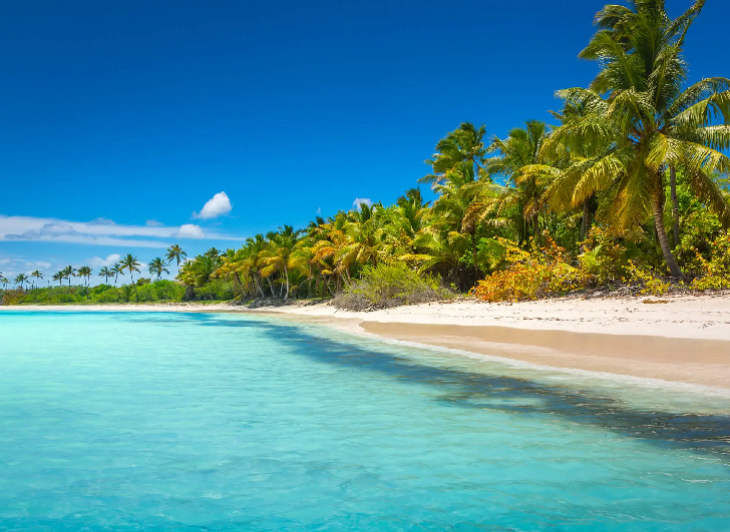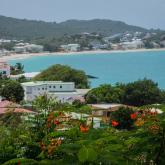
By Publisher Ray Carmen
For decades, the Spanish-speaking islands of the Caribbean have lured travelers with their powdery beaches and sun-drenched plazas. But for investors with a keen eye, they offer something even more enticing than sunsets and rum cocktails: real estate opportunities as diverse and dynamic as the cultures that shape them.
In this spotlight, we explore three of the most prominent Spanish Caribbean destinations—the Dominican Republic, Puerto Rico, and Cuba—to assess their current landscapes for property investment.
Dominican Republic: The Rising Titan of Caribbean Real Estate
The Dominican Republic has quietly become one of the most sought-after real estate markets in the Western Hemisphere. And it’s no mystery why.
With no restrictions on foreign ownership, a buoyant tourism industry, and a government that actively encourages foreign direct investment, the DR has cultivated a stable, accessible property market that draws buyers from North America, Europe, and beyond.
Key Investment Zones
-
Punta Cana: A resort-driven hotspot for beachfront condos, luxury villas, and short-term rentals
-
Las Terrenas: A European expat enclave with boutique hotels and eco-conscious developments
-
Santo Domingo: Urban living and commercial property growth
-
Cabarete: A haven for adventure tourism and low-entry beachfront investments
Market Snapshot:
-
Prices: From $1,500 to $3,000 USD per square meter for beachfront units
-
Rental Yields: Typically between 6–10% annually
-
Taxes: Modest; property transfer tax at 3% and low annual property tax on holdings over a threshold
“The Dominican Republic offers a rare mix: entry-level affordability, legal clarity for foreigners, and strong tourism-backed returns,”says Juan Gómez, a property developer in Punta Cana.
For investors seeking both ROI and lifestyle, this market ranks among the top in the entire Caribbean.
Puerto Rico: U.S. Systems, Caribbean Soul
Technically a territory of the United States, Puerto Rico offers the best of both worlds: American legal and financial infrastructure with the rhythm and beauty of island life. For investors—particularly U.S. citizens—this translates into a golden window.
Thanks to Act 60, a tax incentive law that attracts high-net-worth individuals and entrepreneurs, relocating to Puerto Rico can result in 0% capital gains taxes and significant income tax reductions.
Key Investment Zones:
-
San Juan: Historic neighborhoods like Old San Juan are ripe for short-term rentals and boutique hotels
-
Dorado Beach: The crown jewel of luxury communities, attracting celebrities and elite expats
-
Rincón: Surf town vibes and artistic flair, ideal for second homes and Airbnb properties
-
Vieques & Culebra: Pristine and quiet, perfect for eco-retreat developments
Market Snapshot:
-
Prices: $2,000–$6,000 USD per square meter in prime areas
-
Rental Yields: 5–8%, particularly strong in vacation markets
-
Currency: U.S. Dollar (no FX risk for U.S. investors)
Puerto Rico is particularly appealing to digital entrepreneurs, crypto investors, and retirees looking to optimize their tax exposure without cutting ties to the U.S. banking and legal system.
Cuba: Caribbean’s Caged Giant
Cuba is a paradox. It boasts some of the most beautiful real estate in the Caribbean, from Havana’s decaying colonial mansions to its untouched coastlines—but it remains largely off-limits to traditional investors.
Foreign ownership of property is not permitted outright, and real estate investment must occur through joint ventures with the Cuban government, typically in the tourism and hospitality sector.
Limited Avenues:
-
Marrying a Cuban national can open a pathway to property ownership, albeit under complex legal conditions
-
Expats with Cuban heritage sometimes leverage family connections for semi-legal acquisitions
-
Joint venture tourism projects may offer access for large capital investors
Cuba’s property market is often described as a “sleeping giant”—loaded with long-term potential if political reform accelerates, but fraught with legal ambiguity today.
“If you’re not extremely patient, deeply connected, and willing to navigate bureaucracy, Cuba isn’t your market,” warns Carla Méndez, a Latin American property law expert.
Comparative Snapshot
|
Island |
Foreign Ownership |
Price Range (USD/m²) |
Currency Risk |
Investment Style |
|---|---|---|---|---|
|
Dominican Republic |
Full ownership allowed |
$1,500–$3,000 |
Moderate |
Short/mid-term ROI |
|
Puerto Rico |
Full ownership (U.S.) |
$2,000–$6,000 |
Low |
Tax shelter & lifestyle |
|
Cuba |
Restricted (joint only) |
Highly variable |
High |
Long-term speculative |
The Bottom Line
For serious investors, the Spanish-speaking Caribbean presents two clear pathways and one wildcard:
-
Dominican Republic: Best for entry-level to mid-tier investors seeking strong returns in an internationally competitive market.
-
Puerto Rico: Ideal for U.S. investors seeking tax optimization, legal ease, and a high-end lifestyle.
-
Cuba: Intriguing, but inaccessible—for now.
CANCÚN & COZUMEL: MEXICO’S TOURISM GOLDMINE

Though not part of the Spanish-speaking Caribbean islands, Cancún and Cozumel lie just beyond the western fringe and are too significant to ignore. With Mexico’s welcoming stance on foreign real estate investment—especially via bank trusts (fideicomisos) for non-citizens—these destinations continue to attract global buyers.
Key Investment Zones:

-
Cancún Hotel Zone: High-rise beachfront condos with robust vacation rental potential
-
Cozumel Town Center: Quieter lifestyle properties with growing eco-tourism appeal
-
Puerto Aventuras & Playa del Carmen (nearby): Booming mixed-use developments and gated communities
Market Snapshot:
-
Prices: $2,000–$4,500 USD per square meter in top areas
-
Rental Yields: 6–9%, especially in short-term holiday markets
-
Ownership Structure: Via fideicomiso (bank trust) or Mexican corporation
With well-established infrastructure, direct global flight access, and year-round tourism, Cancún and Cozumel offer stable, high-visibility investment prospects for those seeking both ROI and personal use potential.




